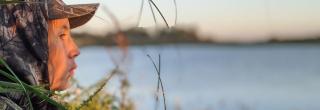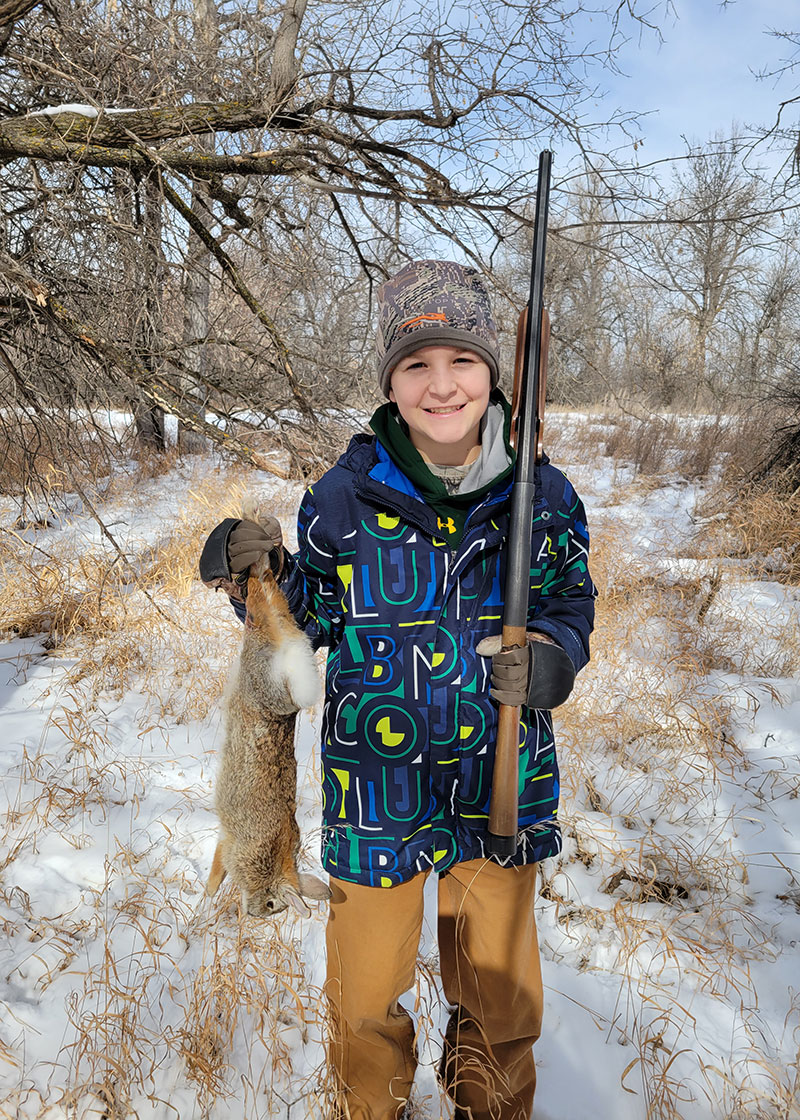
Encouraging Tomorrow's Hunters Grant
The Encouraging Tomorrow's Hunters Grant Program provides funding for organizations that conduct educational shooting and hunting activities. The intent of this grant program is to enhance the recruitment, retention, and reactivation of hunters and shooters. Positive experiences that develop skills and build confidence increase the likelihood of lifelong participation in our state’s rich hunting and shooting traditions.
The maximum grant allowed is $3,000. This grant program currently helps fund approximately 40 clubs and organizations with the average grant of $1,550.
Nonprofit civic, fraternal, wildlife and shooting organizations that are registered with the North Dakota Secretary of State’s office to provide public service are eligible to apply.
Reimbursements may be paid for advertising and promotion, event insurance premiums, event specific equipment rental (tent, trailer, sanitary facility, etc.), non-monetary landowner appreciation gifts, ammunition, targets and safety equipment. Events must include a 25% in-kind match which includes volunteer time (calculated at $28/hr), and/or other expenses.
Note: The Department also helps sponsor the North Dakota High School Clay Target League state tournament. This sponsorship takes the place of grants to existing high school trap teams that Game and Fish had been providing through the Encouraging Tomorrow’s Hunters youth event/project program. ETH grants should be used for hunting activities and other shooting activities that fall outside of the high school clay target league.
Application Forms and Records Requirements
The annual application period for the Encouraging Tomorrow’s Hunters grant runs from early winter to May 1.
Please use the online application form below. Old versions of the application form will not be accepted.
All volunteer time used towards match will need to be tracked on the Donated Volunteer Time Tracking Form.
- The application period will begin Feb. 2. Please check back then.
- Encouraging Tomorrow's Hunters Donated Volunteer Time Form
Additional Resources
Contact the R3 coordinator for additional information.

Grant Process
Who can apply for grant funds?
Nonprofit civic, fraternal, wildlife and shooting organizations that are registered with the North Dakota Secretary of State’s Office to provide public service are eligible to apply. The organization must have in place: officers, a treasury account and liability coverage. One organization contact must be designated to facilitate the grant process.
What is eligible for funding?
Reimbursements can be paid for the following expenses:
- advertising and promotion,
- event insurance premiums,
- event specific equipment and facilities rental (ex. tent, trailer, sanitary facility),
- hunting and safety equipment (ex. vests, blaze clothing),
- nonmonetary landowner appreciation gifts,
- ammunition, targets, clay thrower, etc. Grant maximum is $3,000.
Hunting events will receive priority over shooting only events. Events must include a 25% in-kind match which includes volunteer time (calculated at $28/hr), and/or other expenses.
What is not eligible for funding or reimbursement?
Food, beverages, firearms, fencing materials, gravel, chemicals, fuel, gasoline, seed, fertilizers, trees, shrubs, cement, black top, vehicle rental or mileage, road or parking lot construction or maintenance, camping fees, pen raised birds or animals. Any exploding targets like Tannerite or cannon gun powder will not be reimbursed.
Grant Process
Applications must be submitted to Cayla Bendel at cbendel@nd.gov by May 1. A copy of insurance coverage must be included.
Projects will be evaluated based on weighting criteria for Grant Proposals.
Successful and unsuccessful applicants will be contacted by May 15.
Successful applicants will need to sign and return a final grant agreement (provided by the Department).
Fund Reimbursement Process
Reimbursement is provided after the event and contingent upon the following being provided to the Department prior to December 31:
- current W9,
- receipts for reimbursable items,
- event photographs,
- a brief written report highlighting the event/activity on how it went,
- list of participants names and ages that attended,
- completion of North Dakota Game and Fish partner event registration by all participants,
- donated volunteer time form (at https://gf.nd.gov/education/tomorrows-hunters-grant).
Indemnification and Insurance Coverage Requirements Indemnication
The state and grantee each agree to assume its own liability for any and all claims of any nature including all costs, expenses and attorneys' fees which may in any manner result from, or arise, out of this agreement.
Insurance
Grantee shall secure and keep in force during the term of this agreement, from insurance companies, government self-insurance pools or government self-retention funds, authorized to do business in North Dakota, the following insurance coverages:
- commercial general liability, including premises or operations, contractual, and products or completedoperations coverage (if applicable), with minimum liability limits of $2,000,000 per occurrence,
- automobile liability, including owned (if any), hired, and non-owned automobiles, with minimum liability limitsof $500,000 per person and $2,000,000 per occurrence,
- workers compensation coverage, if applicable, meeting all statutory requirements.
Weighting Criteria used by the Department for Grant Proposals
Grants will be prioritized according to the following criteria. Any grants failing to meet the minimum requirements may be rejected.
- Does the grant proposal meet criteria listed above?
- Describe how the grant proposal benefits recruitment, retention and reactivation and meets a priority in the Department’s R3 strategic plan.
- Does the grant proposal fit better into another Game and Fish program such as the shooting range development or clay target league grant programs?
- How will the proposed activity target new participants and reach individuals who have limited opportunities to hunt and shoot?
- Does the grant application incorporate educational aspects that will benefit the Department’smission? (i.e. North American Model of Wildlife Conservation, hunting philosophy, habitat education, wildlife and conservation).
- Does the activity include the harvest of wild game?
- Does this activity provide additional follow-up or social support to retain new participants?
